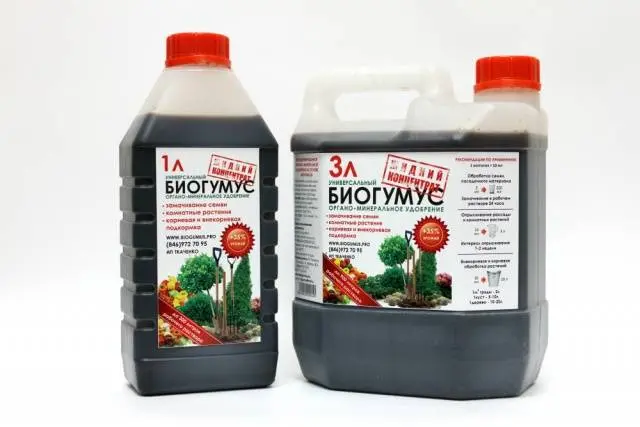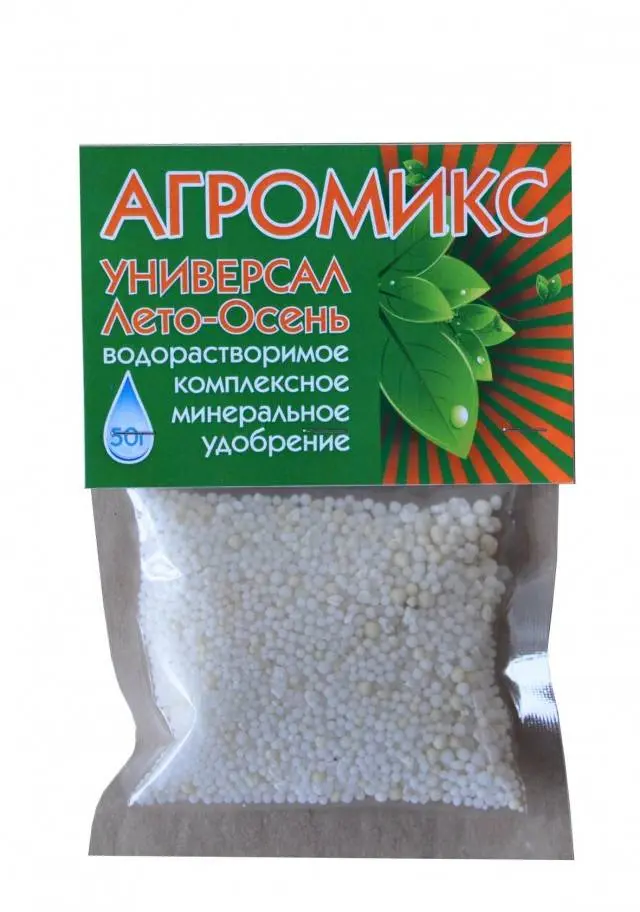Zucchini is known to all. However, not everyone knows about the benefits of fruits that are eaten. Many are grown in order to feed the bird or eat for themselves only at first, when the fruits have just appeared.
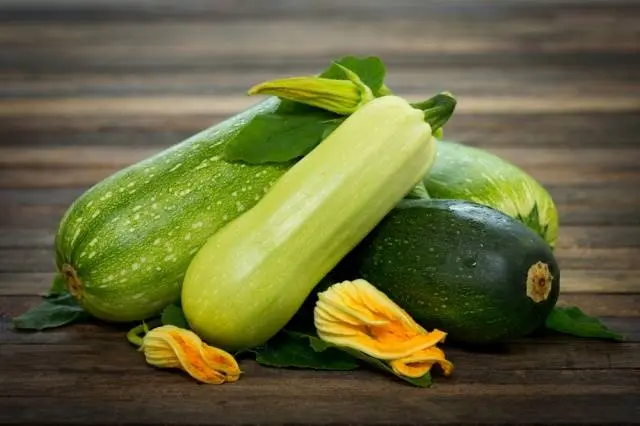
Zucchini contains a lot of useful substances, vitamins and antioxidants. Zucchini fruits have a minimum calorie content, which is important for losing weight. Fiber has a beneficial effect on the digestive system. In favor of zucchini is the fact that it can be consumed at any age with virtually no restrictions. Zucchini is especially useful for pregnant women and for babies with the introduction of complementary foods.
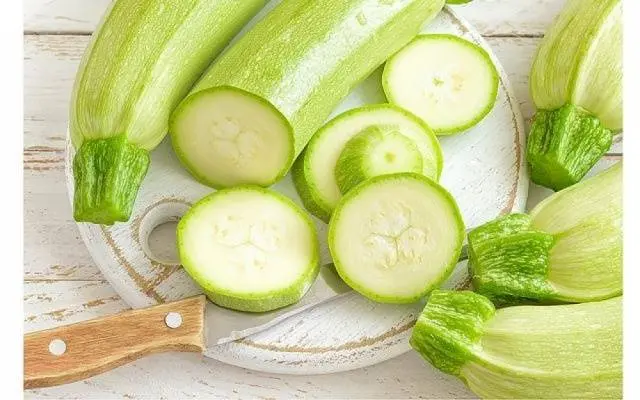
The plant is very unpretentious. If the growing conditions are observed and regular feeding, you can get the richest harvest.
Soil preparation
First of all, think about the right place to grow zucchini. Culture loves the best lit areas of the garden, sheltered from cold winds. With good lighting, it is possible to get the first harvest much earlier.
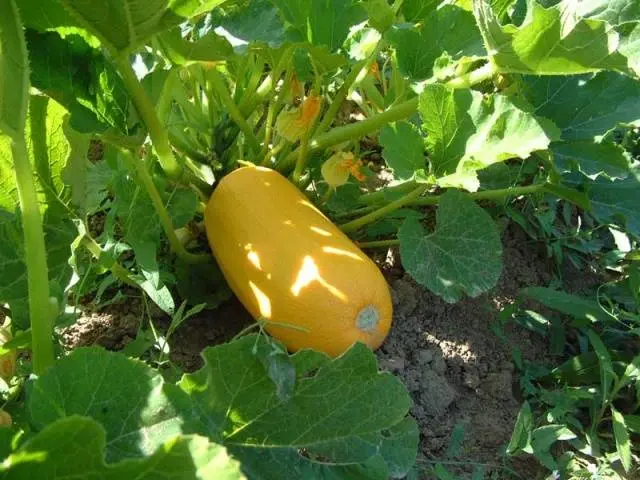
Proper gardening involves crop rotation. Stocks of nutrients on the site have their limits. By planting related crops in the same place, you doom the soil to depletion and, as a result, a drop in crops.
Zucchini grows best after:
- Early and cauliflower;
- onion, garlic;
- Peas, beans, beans;
- spices.
You will get the worst harvest if you grow the crop after:
- A tomato;
- Carrots;
- Turnips;
- Pepper;
- Eggplant
It should be remembered that zucchini works like a pump, sucking everything they need from the soil for their nutrition. Therefore, the preparation of the soil should be done with special attention. Zucchini love fertile soil. Preparatory work begins in the fall. They bring manure and dig up the earth. If necessary, lime is added, since zucchini is best suited to neutral soils.
But you can make compost, superphosphate (about 50 g per sq. M) and ash.
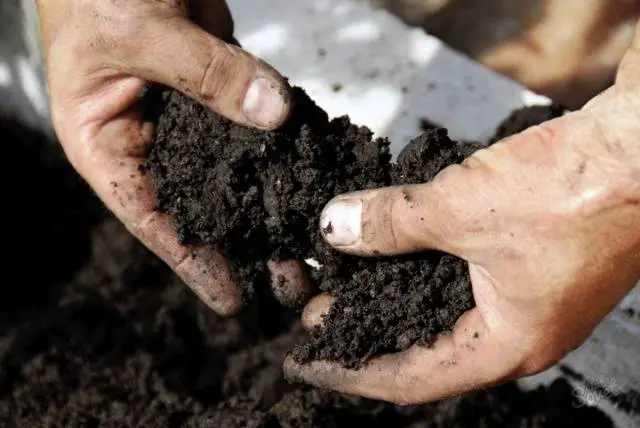
If the soils are clayey, then their structure is improved by the introduction of humus, river sand, and the mineral composition with superphosphate (1 tbsp. L) and ash (3 tbsp.) The norms are indicated for one square. m of soil.
If loam or sandy loam, then humus and the same fertilizers are applied as for clay soils.
Sandy soils are too light and infertile for zucchini. They are fertilized with peat, humus and clay soil to balance the composition of the soil. Fertilizers use the same.

Spring work on preparing the soil for zucchini is as follows: digging up the earth, fertilizing, if this was not done in the fall. The compost is mixed with garden soil, a pinch of potassium sulfate or superphosphate and one tablespoon of ash are added to each well. Before sowing, you can shed the wells with Agricola or Rossa preparations, or fertilize 1 tbsp. l. “Effekton”
2-3 squash seeds are placed in the hole approximately 4-5 cm deep if the soil is light. On heavy clay soils, the seeds do not need to be buried too much, they are sown to a depth of 2 cm. Before sowing, the seeds are germinated in a growth stimulator, in potassium humate or in sodium humate.
Stages of feeding zucchini
After waiting for the emergence of seedlings, after a week, they can be watered with the drug:
- “Bud”, “Agricola”, “Biohumus”. Read the instructions carefully before use. These drugs contribute to the formation of the root system, increase the yield and quality of future fruits, and stimulate the development of plants. For those gardeners who prefer to fertilize according to tradition: mullein infusion (1:10);

- Use a mixture dissolved in 10 liters of water to feed zucchini, which contains ammonium nitrate, superphosphate and potassium (respectively 25, 35 and 20 g).
The point of feeding in the early period of development is that the plants have the potential to grow green mass.
The following top dressing of zucchini is carried out during preparation for flowering, when buds are laid:
- Use complex compound fertilizers that contain the elements needed at the stage when the crop is laid. Fertilizer “Agromix” can be applied to the soil when loosening (25 g per square meter of plot) or dissolved (50 g in ten liters of water), and then watered 5 square meters. m planting zucchini;

- Another option for feeding zucchini grown in open ground: slurry infusion (proportion 1 to 10) and nitrophoska (1 tbsp. L);
- Fertilizer “Rossa” is suitable for feeding zucchini at the stage of budding (2 tablespoons of the drug per 10 liters of water), one liter of the prepared solution falls, respectively, on 1 plant.
A feature of liquid fertilizers is their convenience for the use of foliar dressings of zucchini. It is known that plants absorb nutrients not only by the root system, but also by the leaves through spraying. Gardeners notice the effect of using foliar dressings immediately. This type of top dressing is especially good for weakened, sick plants.
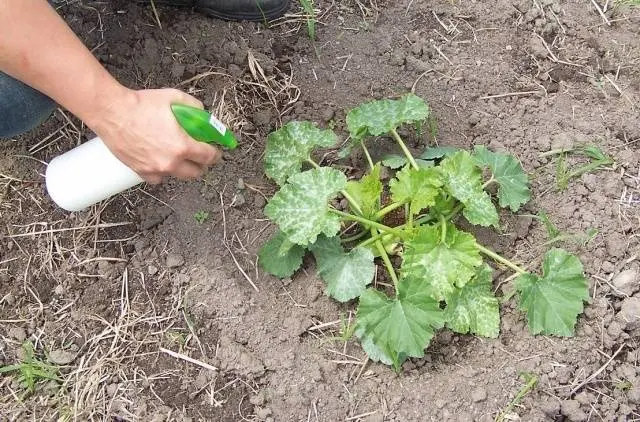
Another feeding of zucchini is performed during flowering.
Ashes (2 tablespoons) are poured into the Effekton fertilizer solution (2 tablespoons per bucket of water), mixed well and watered over the zucchini, based on the norm: 1 liter of solution for each individual plant.
During fruiting, zucchini needs one more top dressing. The fruits of zucchini are large, the plant spends a lot of energy and nutrition on their development. Be sure to support the plants with top dressing:
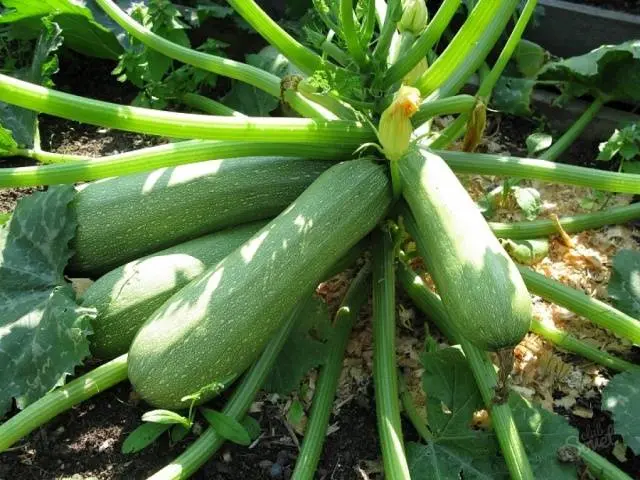
- In a solution obtained by adding 1 tbsp. l. ordinary urea in 10 liters of water, pour 200 g of ash, mix well and pour over the zucchini;
- A solution of nitrophoska (3 tablespoons dissolve in 10 liters of water);
- A solution of superphosphate and potassium nitrate. 50 g of each substance must be added to 10 liters of water, after which each individual plant should be poured with one liter of solution;
- Fertilizers for zucchini, consisting of several elements: copper sulfate, boric acid, manganese sulfate. Each take 4 g;
- Ready-made complex fertilizers: “Kemira”, “Biogumus”, “Agromix” and others. Follow the instructions for preparing the zucchini nutrient solution. Apply them in the form of sprays for foliar feeding.
Zucchini will respond to timely feeding of zucchini with a rich tasty harvest already one and a half months after planting in open ground. Video tips for growing and feeding zucchini during the growing season:
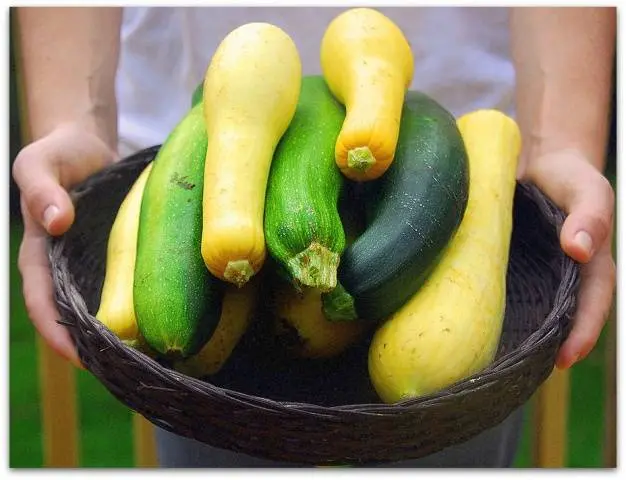
Folk remedies
Folk methods for feeding zucchini in the open field are a worthy alternative to ready-made mineral fertilizers.
Ash
Ash is a natural fertilizer that contains in its composition all the nutrients necessary for zucchini, except for nitrogen. Nitrogen is added separately. If a sufficient amount of manure was applied in the fall, then nitrogen is present in the soil and will be enough for the vegetative season of zucchini. Therefore, ash can become the only fertilizer for the crop.
It should be understood that 1 kg of ash can easily replace fertilizers such as superphosphate, potassium chloride and lime, which is used to deoxidize soils. Ash successfully corrects high acidity to lower or neutral.
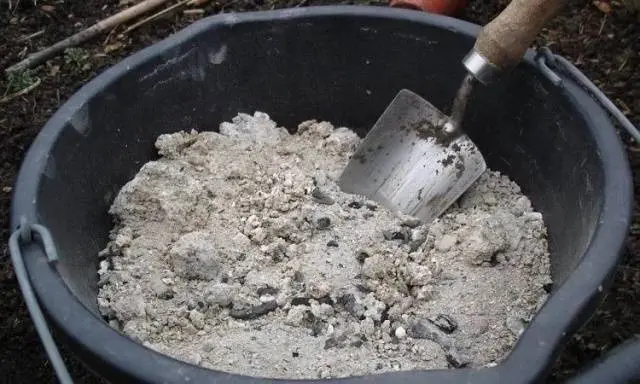
If the plant has brown spots on the leaves or yellowness, then the plant will not be able to bear fruit. Feel free to use ashes to feed zucchini. Since the ashes contain more than three dozen micro- and macroelements.
Ash is most effectively applied dry or in the form of an ash solution (2 cups / bucket of water). Before planting, zucchini seeds are soaked in a solution of ash (2 tablespoons / 1 liter of water). When planting, dry ash is applied directly to the holes (2 tablespoons), and a groove can be made around an adult plant and fertilizer can be placed there, based on the norm of 1 kg per 1 plant, 500 g of ash per square meter. m of soil is brought in in the spring when digging the soil.

Do not use ash from burning coal, polyethylene, roofing felt, polystyrene, rubber.
Yeast
Top dressing with yeast is very well combined with top dressing with ash. Everyone knows that yeast is a fungus. In the course of their life, they secrete substances that are very useful for plants. Zucchini respond by actively building up the root system, on which the formation of the future crop of zucchini depends.
Yeast causes the development of bacteria that are in the soil and are involved in the decomposition of compost and humus with the release of nitrogen.
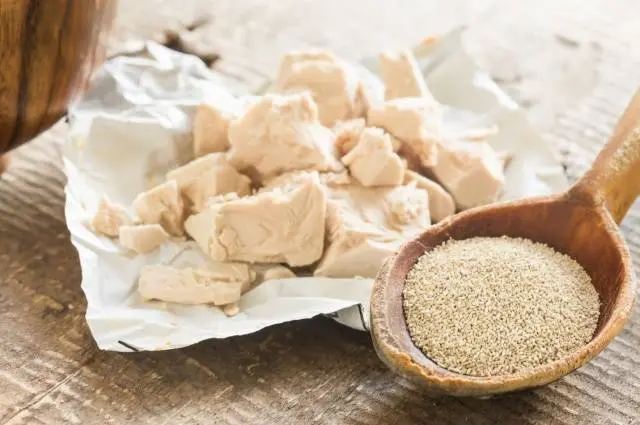
Yeast can be used to feed zucchini in many ways. Some gardeners add dry yeast to the soil. However, when using solutions, the effectiveness of top dressing increases.
100 g of live yeast per half liter of warm water. Give some time for the mushrooms to begin their vital activity (1-2 hours), use the prepared sourdough on a bucket of water to water the zucchini.
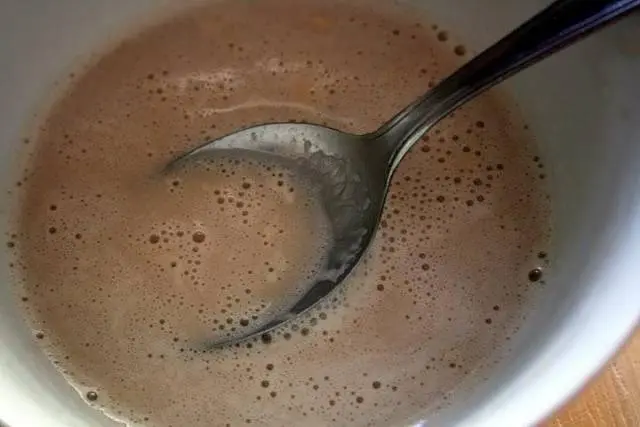
Use a bag of dry yeast (11 g) for 10 liters of lukewarm water, adding 3 tbsp. l. granulated sugar. The solution should stand in a warm place (eg greenhouse) for 2 hours before use.
Yeast fungi live and develop only in heat. It is best to feed zucchini in warm weather, otherwise when it gets cold, the yeast will not be of any use.
Instead of yeast, you can use bread crusts, crackers, old jam for fermentation. This mixture takes a little longer to cook. It should be in a warm place for 5-7 days.
“Herbal tea”
“Herbal tea” or herbal infusion is used to feed all plants in the garden. Such a fertilizer is safe, it is easy to prepare, and it does not require financial costs at all. Gardeners are advised to prepare herbal infusion immediately in large volumes. A 100-liter barrel is best suited, which is half-filled with grass, filled with water and left to ferment.
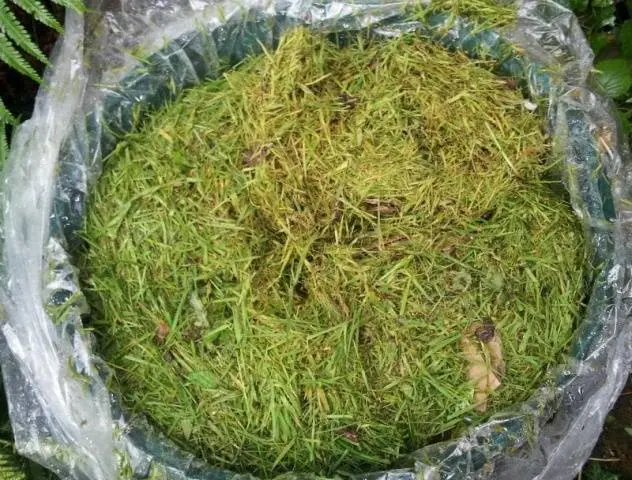
If the weather is warm, then the fermentation process will be active, and the infusion will be ready in 10-14 days. Fermentation can be accelerated by adding a jar of fermented jam, bread crusts.
At first, the infusion will actively boil and foam. The readiness of the infusion is indicated by its transparency. It is usually advised to feed zucchini by diluting herbal tea in a ratio of 1:10. The most experienced gardeners recommend making a higher concentration by diluting the infusion in a 1:2 ratio. For each bucket of ready-to-use solution, add a glass of ash.
For the preparation of herbal infusion, you can use mowed lawn grass, grass obtained by weeding, but a particularly useful fertilizer is obtained from nettles and legume stalks. Video instruction for the preparation of herbal infusion:
Another type of top dressing for zucchini and not only. Prepared on the basis of herbal infusion. You will need a capacity of 100 liters. Ingredients: 3-4 buckets of grass, 2 kg of dolomite flour, 1,5 kg of bone meal, Baikal preparation 50 g.
All components are placed in a container, water is added, everything is mixed well. The mass will actively boil for 2 weeks. Then he settles. For use, take 3 liters of infusion per 100 liters of water (use another container). The infusion will keep for about 2 weeks. The total volume of infusion is enough for 2 treatments of a plot of 15 acres.
Conclusion
Grow zucchini – a healthy vegetable will diversify your diet and keep you healthy. To get a rich harvest, cultivate the plant correctly using top dressing. Top dressing will not only increase the amount of the crop, but also accelerate its ripening. And the use of folk remedies will also save your wallet from additional costs.










